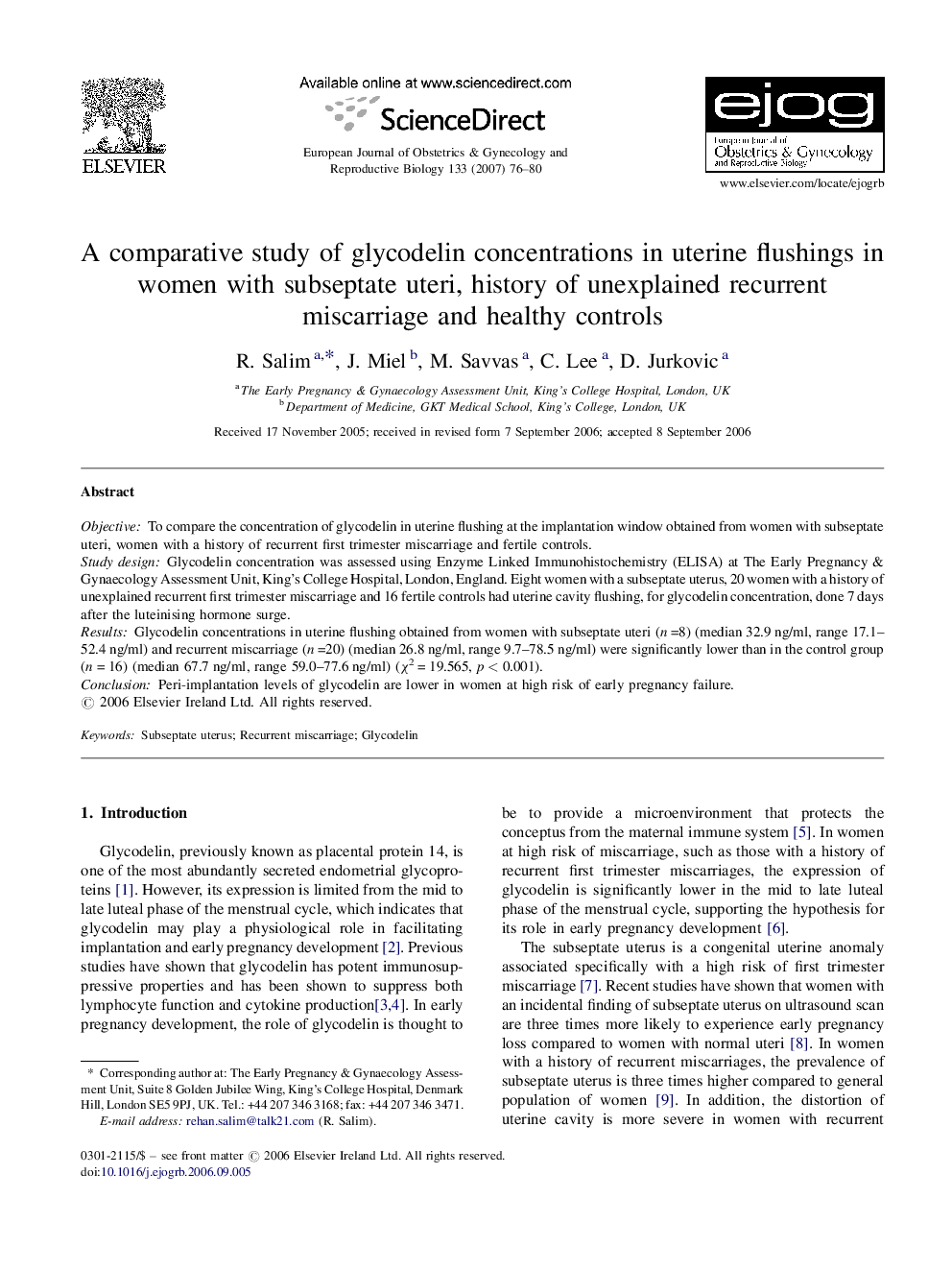| Article ID | Journal | Published Year | Pages | File Type |
|---|---|---|---|---|
| 3922046 | European Journal of Obstetrics & Gynecology and Reproductive Biology | 2007 | 5 Pages |
ObjectiveTo compare the concentration of glycodelin in uterine flushing at the implantation window obtained from women with subseptate uteri, women with a history of recurrent first trimester miscarriage and fertile controls.Study designGlycodelin concentration was assessed using Enzyme Linked Immunohistochemistry (ELISA) at The Early Pregnancy & Gynaecology Assessment Unit, King's College Hospital, London, England. Eight women with a subseptate uterus, 20 women with a history of unexplained recurrent first trimester miscarriage and 16 fertile controls had uterine cavity flushing, for glycodelin concentration, done 7 days after the luteinising hormone surge.ResultsGlycodelin concentrations in uterine flushing obtained from women with subseptate uteri (n =8) (median 32.9 ng/ml, range 17.1–52.4 ng/ml) and recurrent miscarriage (n =20) (median 26.8 ng/ml, range 9.7–78.5 ng/ml) were significantly lower than in the control group (n = 16) (median 67.7 ng/ml, range 59.0–77.6 ng/ml) (χ2 = 19.565, p < 0.001).ConclusionPeri-implantation levels of glycodelin are lower in women at high risk of early pregnancy failure.
